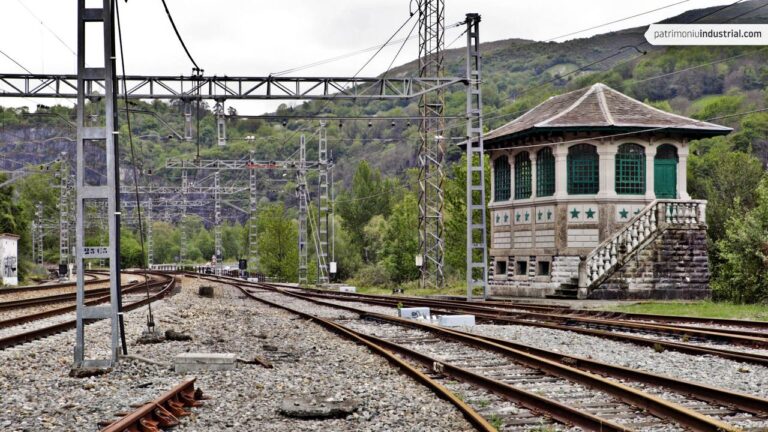Transport
The last years of the 19th century witnessed the opening of different railway branches that, from the main line of Gijón, reached several industrial centres of Asturias. One of them was the San Juan de Nieva railway branch, inaugurated in 1894 by the Compañía del Norte. Its connection with the León-Gijón line was located in the town of Villabona, which had no station until then.
However, the current state of the building is not original, but the result of the history of this location. The original project was drawn up in 1885 for all the stations on the Asturian railway branches and consisted of a rectangular building with a first floor. In fact, the Avilés line originally joined the general line just after the station to make a loop and cross over the track to Gijón.
Nevertheless, in 1912 this distribution was altered in order to increase the capacity of its tracks. Thus, the junction of the Avilés line was built south of the station, so that the building was surrounded by the tracks and became an island building. At the same time, the facilities of the locomotive depot to the north were extended. This arrangement is common in stations where several routes converge, but the peculiarity of Villabona's case is its later appearance.
As a result of this modification, the original building was enlarged with a second floor to be used for railwaymen's housing, while the first floor was used only for circulation purposes. This reform was carried out in other stations of the same type, such as the Sama one, although the final results were not identical.
It is a very classical design, with five bays formed by segmental arched openings, plastered masonry walls and a hipped roof. However, its most distinctive element is a canopy made of metal sections and cast-iron columns that completely surrounds the building, a very peculiar arrangement that derives from its location on an island. It was probably added during the enlargement.
The station has been closed for many years and has lost most of its adjacent facilities, although it continues to provide commuter service. Its factory is maintained without major renovations and, despite its increasing deterioration, which includes the partial collapse of the roof, it is a unique example of Asturian railway architecture.
GALERÍA DE IMÁGENES






Recent Comments